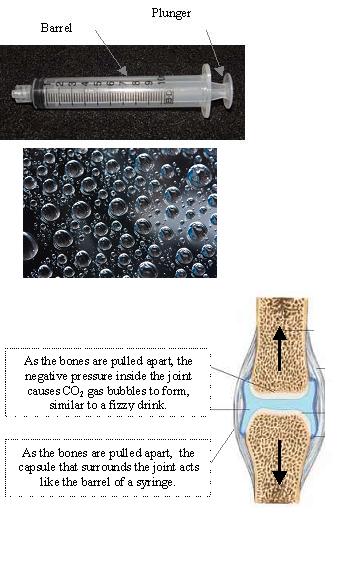What is the
Reference:Multiple sources. including Wikipedia
As PTs we have all at some point been asked the question, “What is the popping noise when I crack my knuckles or my neck?”
Here is the answer in laypersons terms. Imagine placing your thumb over the tip of an empty syringe, then slowly pulling the plunger end out. As you attempt to pull the plunger out, resistance increases due to the negative pressure produced inside the syringe barrel. When finally the plunger is pulled and forced out, a loud “pop” is heard.
Inside our joints we have synovial fluid that lubricates and gives nutrition to our cartilage.
When you stretch your finger or neck to it’s extreme, you’re forcing the joints apart (similar to the above syringe analogy). As they come apart, the capsule that surrounds the joint is also stretched which increases the volume inside the joint.
Now going back to high school physics and the above syringe analogy, we know that if volume increases, pressure decreases.
In this new low pressure environment, gases dissolved in the fluid become less soluble, and form microscopic gas bubbles (similar to a fizzy drink) and this process is called cavitation.
These tiny gas bubbles (mostly CO2) join together to form a larger CO2 gas bubble, which then gets popped by a rush of fluid that attempts to quickly fill the enlarged empty space.
This rush of synovial fluid into the popping CO2 gas bubble is basically the cause of the pop that is heard when we crack our joints. It takes about 15 to 30 minutes for the gases to re-dissolve into the synovial fluid. We can safely conclude that whoever alleges that a “pop” is putting a joint that is “out” back in position …is full of %$@*!
…now you have the simple explanation for the “pop” using a syringe and fizzy pop analogy.
Posted on: March 23, 2013
Categories: Relevant Physical Therapy Articles


